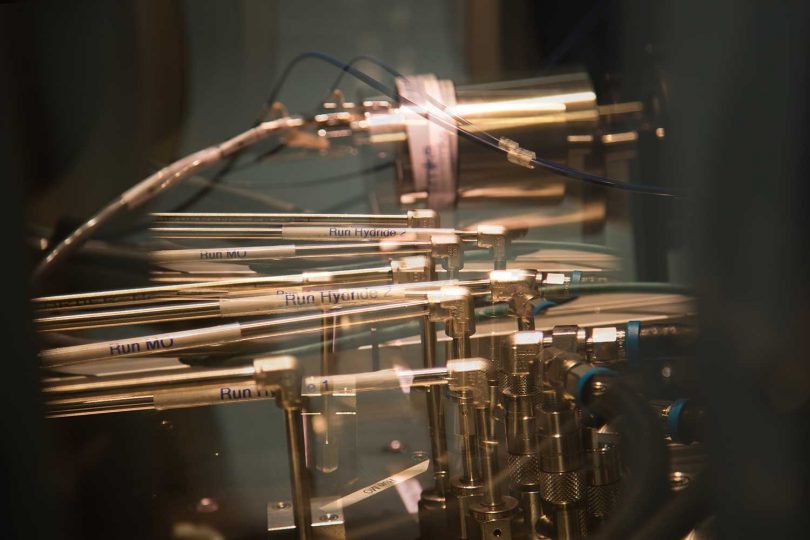„Resonate Bright Like a Diamond“ Joint project on diamond-based lasers
Those who want maximum precision need a laser with the most stable frequency possible. A collaboration between TU Braunschweig and Leibniz University Hannover aims to tackle this challenge for the first time with diamond-based materials. Highly sensitive quantum technologies in particular could benefit from lasers that are up to four times more stable – or accommodate the best lasers currently available in a quarter of the space. The project, funded by the Federal Ministry of Research, Technology and Space (BMFTR), thus offers great opportunities for application – from quantum computers and gravitational wave detectors to industrial value creation.
The most accurate clocks in the world depend on them just as much as kilometre-long gravitational wave detectors: precision lasers are crucial for a wide range of quantum technologies and large-scale research projects. To take the next step towards even more accurate sensors, researchers around the world are working to minimise various sources of noise that , for example, limit frequency stability. In the crucial component for frequency, the so-called optical resonator or cavity, even silicon or sapphire mirrors cooled to the lowest temperatures reach their limits and only deliver maximum performance if they have sufficient space in the experimental setup.
In recent years, Professor Stefanie Kroker’s working group at TU Braunschweig has already successfully used meta-structured mirrors to create more stable resonators in less space. In the ‘All-Diamond Optical Cavities’ (ADOC) project, Professor Marc Wurz from Leibniz University Hannover will now join forces with Professor Kroker to set new standards in the future by applying this successful methodology to diamond materials. Over the next three years, the project partners will develop novel composite materials and investigate their properties.
Accounting for economic aspects right from the start
The research team’s ambitious goal: on the one hand, four times more stable frequencies thanks to diamond-based optical resonators. On the other hand, the same results could make it possible to achieve the current stability standard with a quarter of the space requirement. This would be particularly compelling news for quantum technologies, where the current focus is on developing components that are both small and scalable. Accordingly, the project is closely linked to regional networks, including the QuantumFrontiers Cluster of Excellence and Quantum Valley Lower Saxony.
From the outset, the project partners have also focused on polycrystalline structures, which can be produced cost-effectively compared to single-crystal diamonds and enable high economic efficiency. Due to the wide range of possible applications in research and industry, the results are also expected to stimulate subsequent industrial collaborations or spin-offs.
About the project
The Federal Ministry of Research, Technology and Space (BMFTR) is funding the ADOC project with almost €600,000 as part of its ‘Scientific preliminary projects on fundamental questions of quantum technologies and photonics’ funding programme. Since April 2025, the project team from TU Braunschweig (project management) and Leibniz University Hannover has been conducting research for a period of three years until 31 March 2028.


